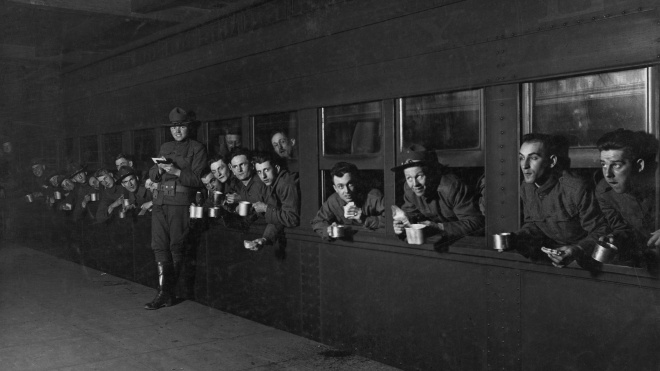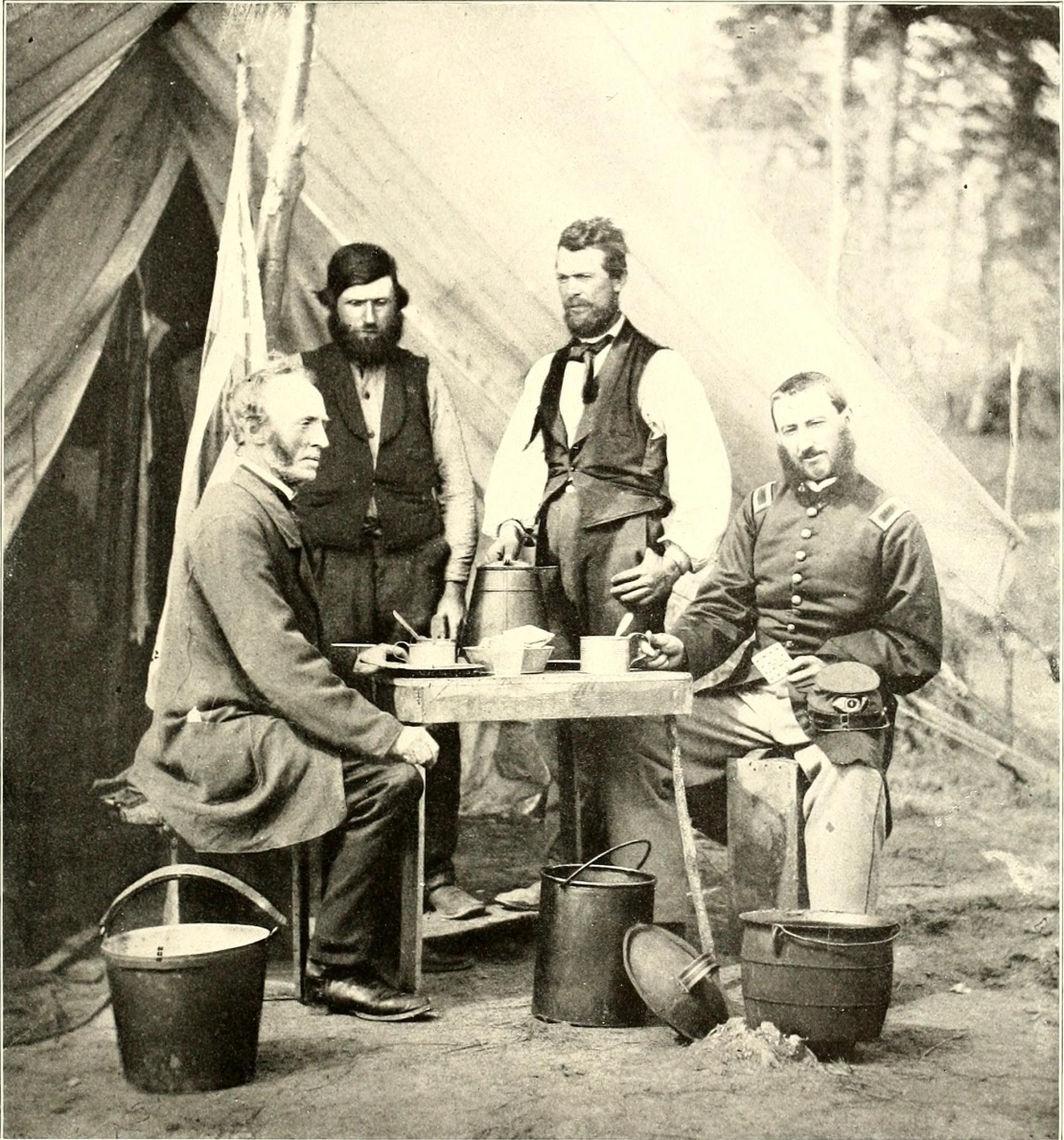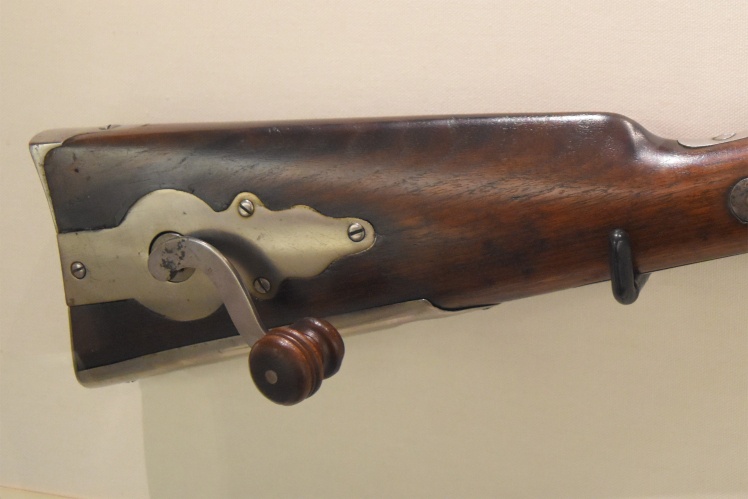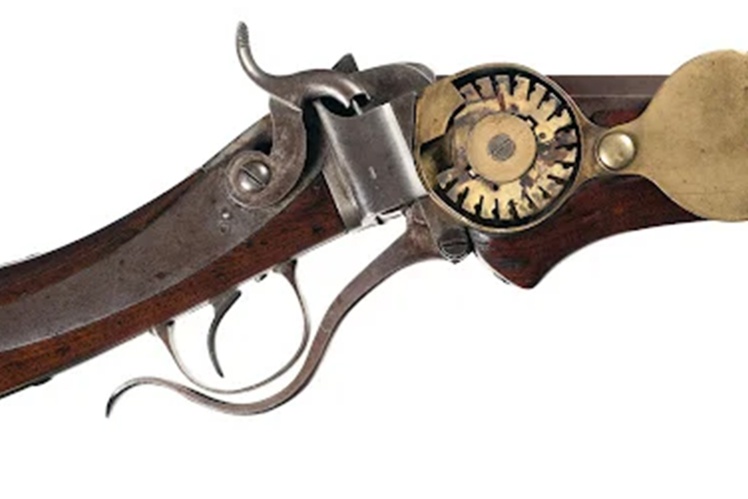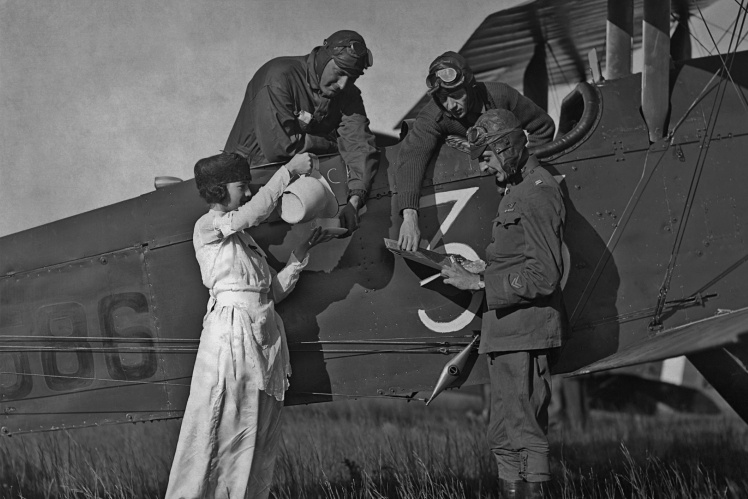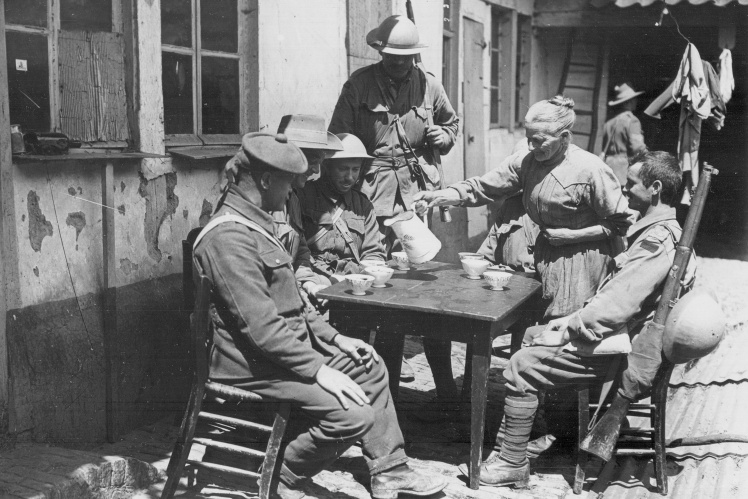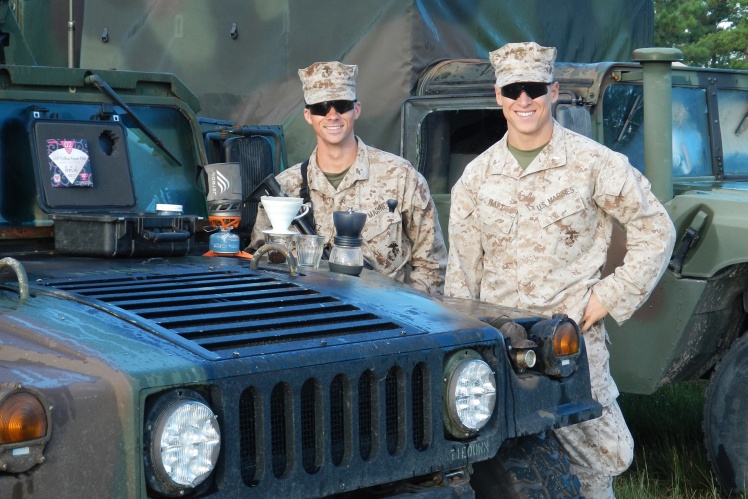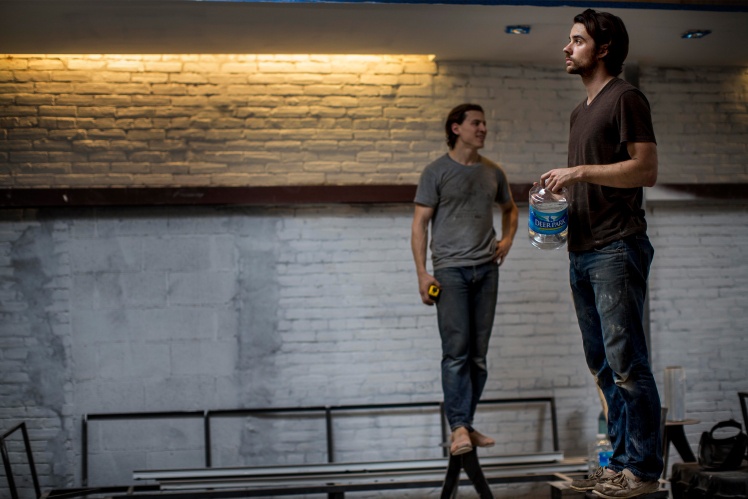Coffee came to Europe from Muslim countries in the first half of the 16th century and quickly became popular. From Europe, coffee went to America. And there it became a strategic military product for the first time — during the American Civil War of 1861-1865.
"No one can fight properly without coffee," wrote one of the Union cavalrymen in his diary. Researchers say that in the soldiersʼ diaries of the time, the word "coffee" appears more often than the word "war", "bullet", "cannon", "slavery", "mother", or even "Lincoln".
Union soldiers with cups of coffee during the American Civil War.
Getty Images / «Babel'»
Since the beginning of the war, the Union government has allocated about 16 kilograms of coffee per year for each soldier. And very soon, coffee became a real passion for the military. They cooked it at the first and best opportunity and drank it before marching, after marching, on patrol, and even during battle.
In the course of the war, the Union army grew to hundreds of thousands of men, and its camps turned into makeshift towns. There were periods when soldiers fought for one or two weeks a year. But they made coffee every day. "On the hills and plains, small fires flared up one after another. Their number quickly grew to hundreds. And soon, tens of thousands of coffee makers were already gurgling with fresh brew," — this is how one of the participants of the Civil War described an ordinary morning in his diary.
Soldiers make coffee in field camps during the American Civil War. Painting by Winslow Homer, 1863.
Getty Images / «Babel'»
But among the soldiers of the Confederacy of the southern states, coffee was in short supply. Even at the beginning of the war, the Union blockaded southern ports and cut off its opponentsʼ access to coffee. Out of desperation, the Confederates tried to improvise — they roasted rice and barley, mixed them with chicory, beets, or sweet potatoes. Such a drink was similar to real coffee except for its color. The Confederates had trouble with coffee, and the Northern army had trouble with tobacco. Therefore, soldiers of both armies often met and bartered between battles.
Benjamin Butler, one of the generals of the Union, bet on the strategic advantage of coffee. He ordered his soldiers to carry coffee in flasks and planned attacks only after the soldiers had finished their coffee. "If your men drink coffee in the morning, youʼre more likely to hold your ground," Butler instructed another general before a battle.
In addition, coffee contributed to the development of engineering thought. Soldiers received coffee in beans and often ground it with the butt of a rifle. This caused the weapon to deteriorate over time. Then the carbine manufacturer Sharps Rifle Co. came up with a know-how — a gun with a manual coffee grinder built into the handle or butt.
Sharps Rifle Co. carbine with a manual coffee grinder built into the butt. Sharps Rifle Co. carbine with a manual coffee grinder built into the handle.
Twitter; preview.redd.it
The coffee industry received a new push for development in the 20th century. In 1901 in Chicago, the Japanese emigre chemist Satori Kato invented and patented dry coffee extract, i.e. soluble coffee. But another emigrant made a name for himself with this invention — the Anglo-Belgian entrepreneur George Washington, the namesake of the first president and one of the founding fathers of the United States. In 1910, he founded the G. Washington Coffee Refining Co. in Brooklyn, which was the first one to successfully mass-produce instant coffee.
Advertisement for George Washingtonʼs instant coffee in The New York Times.
Wikimedia
Washington launched a large-scale advertising campaign under the slogan "Now you can drink as much coffee as you want." The marketing strategy emphasized that the new product was healthier because it was free from the acids and oils found in regular coffee. And even after cooking, no sediment remained. Soon instant coffee began to gain popularity.
But the real boom happened during the First World War. Preparing to send its soldiers to Europe, the US Department of War planned to provide them with fresh coffee. For this purpose, factories where grains were roasted and ground were opened in advance in France. But the government officials faced another question — what to replace the expensive grain coffee with.
Pilots drinking coffee before a combat sortie, 1918. A French woman pours coffee for British soldiers, May 1916.
Getty Images / «Babel'»
And here the drink of Washingtonʼs company came in handy. Before going overseas in 1917, American soldiers bought up all the instant coffee they could. The US Department of War drew attention to this and soon began to purchase instant coffee for all the money that the budget allowed. Already at the end of 1918, the government supplied about 17 thousand kilograms of instant coffee to the front every day.
After experimenting with packaging, it was decided that an individual envelope of instant coffee with a portion of approximately seven grams is optimal. Instant coffee has become wildly popular on the front lines. Soldiers mixed it in hot water in tin mugs called "Georgeʼs cup" after the founder of the company. "There is one gentleman whose hand I will shake first after victory, that is George Washington of Brooklyn, a friend of the soldiers," wrote one of the American soldiers in a letter from the front. One of the high-ranking army officials concluded after the war that "coffee was as important as meat and bread because it restored courage and strength, and maintained fighting spirit."
American soldiers drinking coffee with donuts, 1918.
Getty Images / «Babel'»
Germany and its allies had the same problems with coffee as the Confederates once had. England and France have blocked sea deliveries of coffee since 1914. So in the spring of 1916, the German government created the War Committee on Coffee, Tea and Substitutes, which officially managed all coffee supplies and directed them primarily to the army and navy. The ordinary Germans had to make do with substitutes — the same barley and chicory. However, at the end of the war, they were also banned from sale. All grain was used to make bread, and chicory was fed to livestock.
German soldiers near a coffee van during World War I, 1915.
Getty Images / «Babel'»
After World War I, the Washingtonʼs company increased production of instant coffee "for the home" under the new slogan: "Our coffee was at war, now itʼs back home". But soon they had competitors in Europe. The Swiss company Nestlé became interested in the novelty and improved the technology for the production of instant coffee. In 1938, it launched its own Nescafé product, which soon began to dominate the world instant coffee market. And Washingtonʼs business gradually worsened. In 1943, he sold the company, and since 1961, the George Washington brand of coffee has been discontinued.
Postwar advertisement for Washington Instant Coffee in the New York Tribune, 1919.
Getty Images / «Babel'»
During the Second World War, coffee also remained a constant companion of soldiers. An American soldier consumed about fifteen kilograms of coffee per year. The name "Georgeʼs cup" was replaced by "Joeʼs cup". According to one of the legends, it was named after the American Secretary of the Navy Josephus Daniels, who even during the First World War completely banned alcohol in the fleet. So coffee became the strongest allowed drink for military sailors.
Coffee technologies did not stand still either. If instant coffee became the legacy of the First World War, then coffee in tablets became the legacy of the Second World War. The Allied armies and navies were supplied with pills, each containing B group vitamins and three grams of caffeine. For comparison, a cup of good strong coffee contains about 100 milligrams of caffeine. And also, according to legend, "Americano" appeared during the Second World War — when American soldiers in Italy started diluting the local espresso with water.
American sailors drinking coffee during World War II, 1942.
Getty Images / «Babel'»
The German chocolate manufacturer Scho-Ka-Kola also switched to military needs. Each bar of chocolate contained 96 grams of pure caffeine, and it was part of the soldierʼs ration. This was especially true for German military pilots, so the chocolate bars were called "Pilotʼs Chocolate".
Scho-Ka-Kola chocolate is still produced in the same packaging as it was during World War II.
Getty Images / «Babel'»
The USSR received not only weapons and equipment through lend-lease. Soviet soldiers also received American coffee tablets. And coffee itself was transferred to the Soviet Union not only by the United States. In 1943-1944, Yemen included about 25 tons of mocha — its own kind of coffee — in the aid program for the USSR.
During the Vietnam War of 1959-1975, American soldiers often didnʼt have time to prepare coffee, so they simply poured it from bags directly into their mouths and chewed — this method did not catch on in peacetime. In general, coffee played an important social role during this war.
American soldiers in Vietnam drink coffee, March 1, 1968.
Getty Images / «Babel'»
Actually, not even coffee itself, but a network of small GI coffee shops, which in the late 1960s began to open in cities and towns near American military bases in the USA, Germany and Japan. They became a place where soldiers could gather and talk openly about their problems and frustrations without the presence of military superiors. And gradually turned into one of the symbols of the American anti-war movement.
GI Coffeehouses anti-war poster.
Getty Images / «Babel'»
Coffee still remains an indispensable companion of American soldiers fighting abroad. "The military works on coffee. Especially the Marines, itʼs a ritual for them," says former Marine Harrison Suarez.
It was over a cup of coffee at the training camp that Suarez met his friend Michael Haft. Later, they both served in Afghanistan, and after returning from the mission, they founded their own coffee company, Compass Coffee. Now their business is expanding. But they donʼt forget where it all started. “We sent coffee to the Marines on aircraft carriers to Afghanistan. Whenever a soldier orders a coffee, we do everything we can to deliver it anywhere in the world,” says Haft.
Harrison Suarez (left) and Michael Haft while serving in Afghanistan. Harrison Suarez and Michael Haft renovating the new coffee shop, 2014.
Getty Images / «Babel'»
In Switzerland, coffee is included in the list of strategically important products that the government reserves in case of war, natural disaster, and other emergency situations. The stock of coffee in Switzerland is 15,000 tons, which should be enough for three months. In 2019, the government tried to exclude coffee from the list of essential products. But after massive public protests, the Swiss authorities revised their decision.
What about Ukraine? The dry rations of the Armed Forces of Ukraine include instant coffee in a bag. But the volunteers are trying to convey something more interesting to the Ukrainian military. The founder of the Coffee in Action company, Vadym Granovsky, has launched the Coffee Care volunteer initiative since the beginning of the full-scale war, establishing the Coffee in Action charity fund. The point is to provide the Ukrainian military at the front with quality jezve and coffee.
A Ukrainian fighter who received coffee and jezve.
Getty Images / «Babel'»
The idea was born in early March. Emir, who makes jezves according to ancient technology and studied in Syrian Aleppo, became a partner. "Emir answered quickly. He reminded me that he himself was a soldier in the Turkish army for a year and a half. Therefore, he understands the idea well. He said that he is a true friend of Ukraine and will do everything to start production as soon as possible," says Granovsky. This is currently the lowest price — €57 for two jezves. The partners got the support of the Ambassador of Ukraine to Turkey, Vasyl Bodnar. As a result, the Soy Ukrainer jezve was created — specifically for use in the field, and the handle was made of hardened steel, which is used to make weapons.
"Coffee prepared in a jezve is the most familiar to most Ukrainians. As for filter coffee at the front, it has also taken its niche, many people use it. But when I talked with the military, I realized that most expect strong coffee — from the point of view of rich taste and caffeine, and from the point of view of jezve, itʼs just stronger and richer," says Granovsky.
Fighters are preparing coffee in a jezve on the hearth.
«Babel'»
Filter coffee has gained popularity among young people in big cities. Many of the UAF fighters are more mature, from different regions of Ukraine — from villages, district centers, which are not part of the hipster culture. And mostly they like jezve. "Although, to be honest, they can also just steam ground coffee in a cup," continues Granovsky.
Over the course of four months, the volunteers delivered to the front about 200 jezves (each one is used by dozens of people) and several tons of a blend of three varieties of Arabica, properly ground for a jezve. They try to send it on the front once or twice a month.
Translated from Ukrainian by Anton Semyzhenko.
Coffee helps Ukrainian soldiers to fight. And Babel feels much better thanks to your support: donate in hryvnia 🔸 in cryptocurrency 🔸 Patreon 🔸 PayPal: [email protected]
